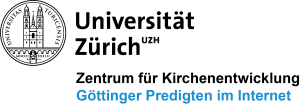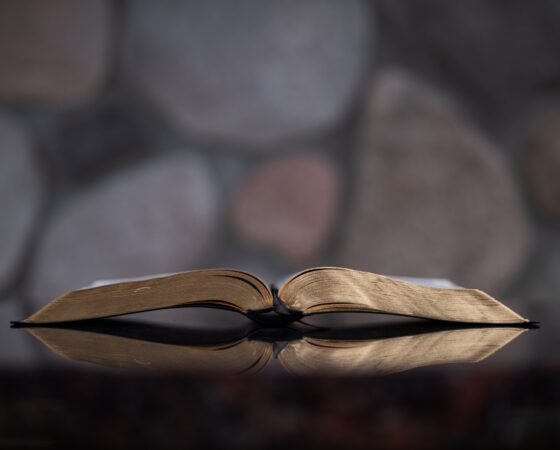Grace to you and peace from God, our Father,
and from our Lord Jesus Christ. Amen.
Mother Mary. She holds Jesus tenderly in her
arms, embracing Him with her hand. He lies supported in the crook of her arm as
if in a crib. She bends her head toward Him, her gaze meeting his, yet she
looks beyond Him and into Him. Her mysterious eyes barely betray a smile. The
expression on her face is sweet. And yet there is more. The Child looks up to
her, alert, solely focused on His mother. Half-reclining, quietly snuggled in
her arm, he nevertheless raises his head.
The hands of both regard each other. Both left
hands nearly touch at the Child’s side, the mother’s hand supports the Baby,
Whose hand holds a scroll. Both right hands appear to be in motion, pointing to
each other,one large, one small.
Only a few nuances of color distinguish the
picture. The faces, the hands and the clothing are in earth-tones, browns
tinted with reds and orange.Few details distract from the clear attention that
the picture draws to the two subjects.
Lifelike, earthy, and unimposing, the image
would have a harmonic, nearly idyllic, affect on us were it not for certain
alien aspects. The mother’s mien is mysterious, betraying a soft melancholy
that does not belong inthis scene. The child’s face is too mature, the shape
not appropriate to hisage, his bearing, his upheld head unnatural.
The stylized techniques of the iconographers
are foreign to eyes accustomed to western art. They remain aloof. Westerners do
not immediately, spontaneously grasp their meanings. Icons are painted
according to strict conventions which determine the motif, the theme, the
composition of the picture, and the details. The artist has only limited
freedom with certain details, the palette, and facial expressions. For that
reason, every detail is meaningful.
This icon is quite old, dated in the 13th
century. Its provenance is a monastery on Athos. Its motif belongs to the most
broadly disseminated and revered Marian icons, called „Hodegetria,“ after the
monastery Hodegon, in which the icons of this type were first found. Hodegetria
means „Guide.“
Typical for all icons of this motif is that
Mary bears the Child on herleft arm while she motions toward Him with her right
hand, emphasizing,pointing. Here Mary’s hand is open, held upwards, as if she
were receiving something. While at the same time she directs attention to the
Child on her arm. Jesus holds up His hand towards the hand of His mother as if
He intended to touch it. Three fingers are held together in a benedictory
gesture. Likethe eyes of both, their hands play off each other. However, the
eyes remain in the picture, while the hands direct our attention beyond and
thus open up the painting. The hands draw the viewer into the picture.
Icons, according to the understanding of the
Eastern Church, are pictures that direct our attention outwards. They are
windows on heaven, the Gospel painted in colors, preaching pictures which
reflect the godly and eternal within our temporal world.
Mary directs our attention to the Child: Look
here: Here is He Whom God has sent to save the world. Look here: In this Child
God is potent and present. He is the One Who wasto come, in order to bring
fulfillment, righteousness, and God’s heaven to earth. Look here: He is the Son
of God, but also my Child, a Gift of God entrusted to me, born of me, protected
under my arm. This is precisely what icons do. They want to direct our
attention to Christ, to God’s living Presence.
And this is precisely what sermons do when they
proclaim using words. Theypaint the Gospel before our eyes, they open up the
old familiar message for the present day. Look here: It is He about Whom I
speak. I place Christ before your eyes. Through Him, heaven is open for us. In
Him God has won for us clear vision and glowing colors.
The colors of the icon describe that. The dark
brown robe is accented with purple, representing earth and heaven, the human
and the divine. The orange appears where light and matter conjoin. The colors
grow lighter toward the top, especially in the halo which envelopes Mary’s head
in golden yellow, and place the entire picture in the reflection of God’s
light.
The Protestant churches have cast a shadow over
Mary. During theReformation a deep skepticism erupted against the veneration of
the saints and their statues. They disappeared. The danger of abuse, that
statues and pictures could distract human sentiment from „Christ alone,“ the
dogma that made the Reformation so strong, militated against Mary as well. Too
many statues and icons had been made of her, too many legends had arisen,
legends alien to the Biblical foundations. Too many Marian dogmas followed
later: Mary the sinless, Mary the eternal virgin. She was no longer
recognizable as a woman of flesh and blood, and was thus rendered impotent and
stylized into a counter-Eve. The sectarian debates over Mary endure to the
present day.
But the rediscovery of Mary among Protestants
is imminent. A stereotypes fall, Mary the woman is again enjoying recognition.
She is our sister inthe faith, who incarnates the feminine dimension of union
with God. With her compassionate and courageous heart trod with decisiveness
and good hope the path which God showed her. Thus she is herself the guide
when, in this icon, she opens her hand to receive while simultaneously she
invites us in and points to her Child, saying, „Look here: this is my Child,
Who is a human being and the Son of God at the same time. Look to him. Turn to
Him alone. Hold Him in your heart and let Him grow in you.“ This, her
unmistakable proclamation, is thoroughly evangelical, holding „Christ alone“
before our eyes.
Icons proclaim their messages with great
economy of detail. They want us to study them in all their subtleties.
Consequently, in this icon, Mary’s fingers call us to examine the work more
closely.
Her hand draws our attention to the Child on
her arm Who is so unusually young and simultaneously old, carried like a baby
and yet somewhat adult. The scroll in His left hand indicates that Christ is
the living Word of God. With His right hand He blesses Mary, His mother, who
holds Him though He has already outgrown her. The face looks to mature for His
tiny body. Jesus is presented as a child-sage. The entire bridge that He
crossed lies in this image, between Beginning and End, between life and death.
In this moment of His infant security, we already see the coming Passion: the
half-reclining position, the crossed legs, and the naked feet that stick out
from under the robe. They belong to the iconographers‘ representations of
Jesus‘ suffering. At first glance this scene of mother and child appears to be
familiar and gentle, but closer examination reveals the entire content of the
Gospel. Mary’s hand draws us to consider the entire Christ: the Son of Man,
born of woman and held by her, and still the Son of God, in whom time and
eternity, heaven and earth meet. Her hand shows us the cross that He carried so
that we could experience reconciliation. It draws our attention to His living
presence as the Word of God that, in our midst, awaits its proclamation.
Mary the guide. We are gradually discovering
this icon and its message. As foreign as it first appears to us, as distant as
this Mary may seem to us, what we find at the beckoning of her hand is
nevertheless familiar and evangelical. The Bible verse for the coming week
could serve as a title for this icon: „Cast your burdens upon Him, for He cares
for you.“ In God’s son alone is our salvation. Mary shows us this, the message
that we must constantly preach. In the course of church history Mary has worn
many faces. In the Bible she meets us as a woman who was moved by God, who with
complete trust in Him and His future let her life be changed, who in joy and
pain remained bound to Him. And she meets us as a mother who had to learn so
early that That Which God had entrusted to her did not belong to her alone, but
to all people.
Mary the guide. If we allow God to take us on
that same journey with her, then we also will not withhold Christ from the
world, but we will unmistakably, clearly, and lovingly point Him out, looking
into his eyes, turning toward him with open hands so that we can receive what
He gives, and passing it on. May God give us the courage and faith for that!
And may the right hand of the Child, raised to pronounce a benediction, touch
us, too.
Amen
Dr. Petra Savvidis, Immermannstr. 22, 58453
Witten
e-mail savv@ngi.de
Translation by Prof. Dr. Theodore N.
Thomas
Milligan College, Tennessee
USA 37601
e-mail: tnthomas@milligan.edu
|

